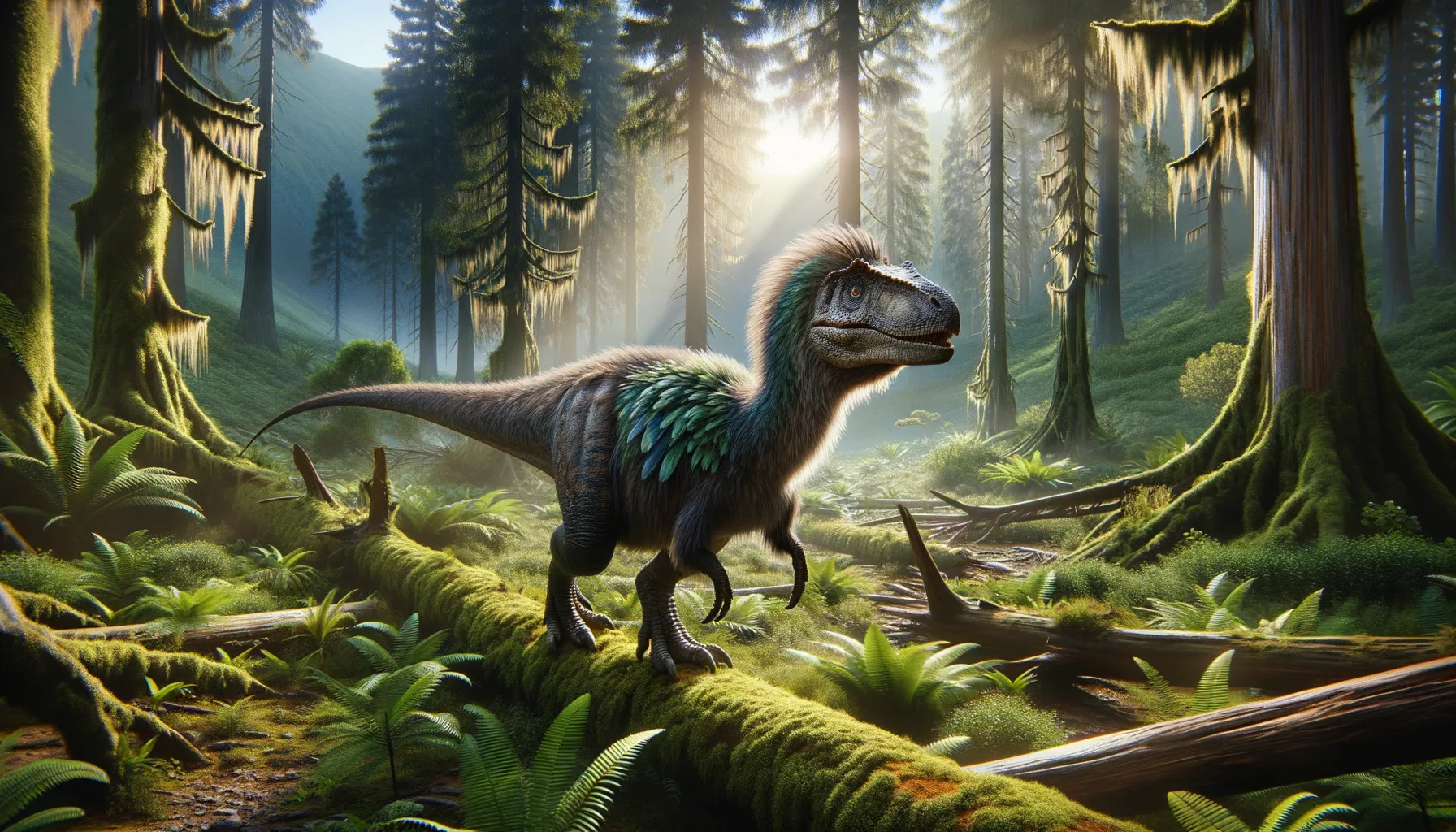
Beipiaosaurus
Uncovering early feathered wonders!
Period
Cretaceous
Length
Measured approximately 2.2 meters (7 feet) long.
Height
Stood about 1.5 meters (5 feet) tall.
Weight
Weighed up to 100 kilograms (220 pounds).
Beipiaosaurus was a feathered dinosaur that lived during the Early Cretaceous period. Known for its unique feathered appearance, Beipiaosaurus represents one of the early examples of feather evolution in theropods. Its fossils have provided significant insight into the development of feathers and their potential roles beyond flight. This omnivorous dinosaur highlights the diversity and adaptability of theropods during the Cretaceous period.
Diet
Beipiaosaurus likely had an omnivorous diet, consuming a mix of plants and small animals. This diverse diet would have allowed it to take advantage of various food sources available in its habitat.
Hunting
Unlike the larger carnivorous theropods, Beipiaosaurus probably foraged for its food rather than actively hunting. It would have used its claws to dig into the ground or to reach for plants.
Environmental challenges
Beipiaosaurus lived in a forested environment that posed challenges such as finding sufficient food and evading larger predators. Seasonal changes might have affected the availability of its food sources. Adapting to these shifts would have been crucial for its survival.
Speed
Moderately fast walker.
Lifespan
Probably around 10-20 years.
First discovery
Discovered in 1996 in Liaoning, China.
Fun Facts
- Beipiaosaurus was a feathered dinosaur that lived around 125 million years ago during the Early Cretaceous period.
- It was discovered in the Liaoning Province of China, an area known for its well-preserved dinosaur fossils.
- Beipiaosaurus is one of the earliest known dinosaurs with feathers, providing valuable insight into the evolution of feathers in dinosaurs.
- Unlike many other theropod dinosaurs, Beipiaosaurus was believed to be herbivorous, meaning it primarily ate plants.
- It had a unique combination of features, including long claws, a toothless beak, and a small head, making it a fascinating subject of study for paleontologists.
- Beipiaosaurus was relatively small compared to other theropods, measuring about 7 feet long from head to tail.
- The dinosaur's name, Beipiaosaurus, means 'Beipiao lizard,' named after the city near where it was discovered.
Growth and Development
Like many theropods, Beipiaosaurus likely hatched from eggs and underwent a growth spurt early in life. Juvenile individuals may have had different feather coverings compared to adults. As they grew, they developed strong limbs and claws useful for foraging.
Habitat
Beipiaosaurus inhabited dense forests with complex plant life, providing it with both food sources and cover from predators. The lush vegetation would have supported a diverse ecosystem, including other small dinosaurs and early mammals.
Interaction with other species
Beipiaosaurus coexisted with a variety of other dinosaurs and early mammals. Competition with other herbivores and omnivores would have influenced its feeding strategies. It might have also faced predation threats from larger theropods.
Natural lifespan
Beipiaosaurus may have lived up to 10-20 years in the wild.
Reproduction
Reproducing through egg-laying, Beipiaosaurus likely built nests for its offspring. Parental care scenarios could have included guarding the nest or helping hatchlings find food. The discovery of similar species suggests communal nesting behavior might have been possible.
Social behaviour
Beipiaosaurus might have traveled in small groups for social interaction and protection. This social structure could have helped them locate food and defend against threats. Cooperative feeding and resting could have been common within these groups.
Fossil locations
Fossils of Beipiaosaurus have been found in the Liaoning Province of China, known for its rich deposits of feathered dinosaur fossils. These well-preserved fossils have allowed paleontologists to study its anatomy in detail, providing insight into early feather evolution.
